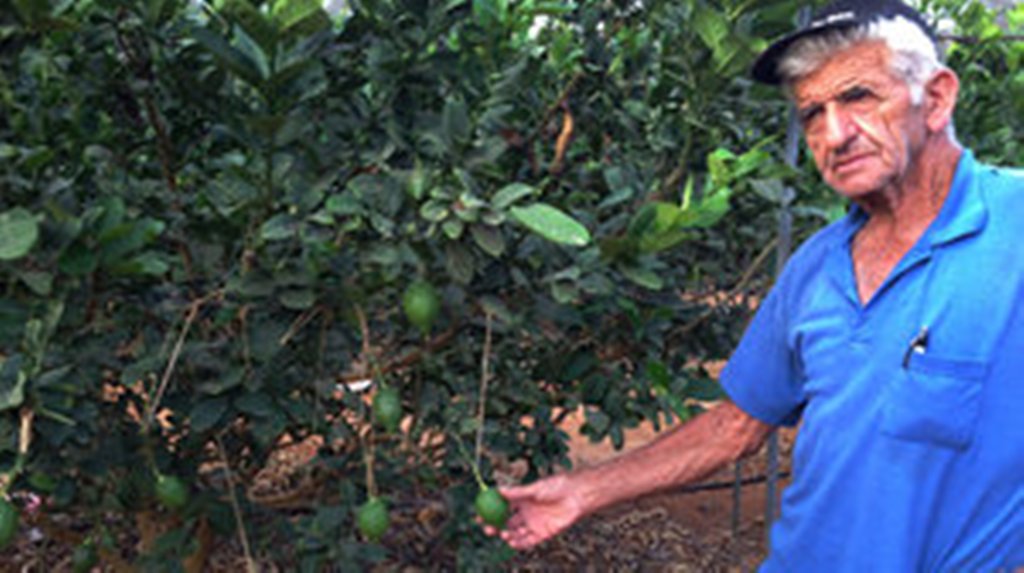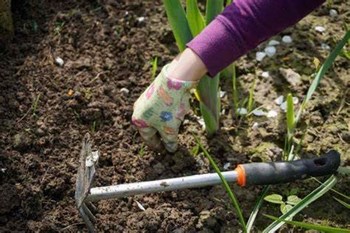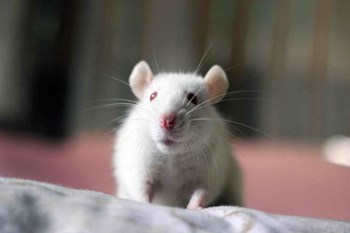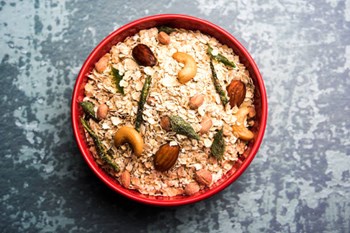
കാര്ഷിക രംഗത്ത് വലിയ വിപ്ലവങ്ങള്ക്ക് നാന്ദി കുറിച്ച ചെറിയ രാജ്യമാണ് ഇസ്രായേല്. കാലാവസ്ഥയും ആഭ്യന്തര പ്രശ്നങ്ങളും സമ്മര്ദ്ദങ്ങളും അതിജീവിക്കുന്ന സാങ്കേതിക മികവാണ് അവരുടെ പ്രത്യേകത. കാര്ഷിക രംഗത്ത് കീടനാശിനിയുടെ അമിതോപയോഗം കുറയ്ക്കാനുളള ശ്രമത്തിലാണ് ഇസ്രായേലും. കാര്ഷിക മേഖലയിലെ കീടനാശിനി അളവ് നിശ്ചയിക്കുന്നത് കൃഷി വകുപ്പും മൃഗസംരക്ഷണ വകുപ്പും സാനിറ്റേഷന് വകുപ്പും ആരോഗ്യ വകുപ്പും ചേര്ന്നാണ്. ഇതിനായി ഒരു ഇന്റര് മിനിസ്റ്റീരിയല് കമ്മറ്റിയുണ്ട്. മനുഷ്യനെയും പ്രകൃതിയേയും ഓരോ കീടനാശിനിയും എത്രമാത്രം ബാധിക്കും എന്ന പരിശോധനയും അനുമതി നല്കലും ഈ സമിതിയാണ് ചെയ്യുന്നത്.
ചെടികളുടെ സംരക്ഷണം സംബ്ബന്ധിച്ച 1994 ലെ നിയമവും മൃഗങ്ങളെ സംബ്ബന്ധിച്ച 1982 ലെ നിയമവും ഇതിനായി അടിസ്ഥാനപ്പെടുത്തിയിരിക്കുന്നു. ആകാശമാര്ഗ്ഗമുള്ള മരുന്നു തളിയും തറയില് നേരിട്ടുളള മരുന്നു തളിയും റോഡില് നിന്നും എത്ര ദൂരെയാകണം, വീടുകളില് നിന്നും എത്ര അകലം പാലിക്കണം എന്നൊക്കെ നിയമം കൃത്യമായി അനുശാസിക്കുന്നു. 2003 ലാണ് സുസ്ഥിര വികസനത്തിന് കീടനാശിനി ഉപോയോഗം കുറയ്ക്കാന് ലക്ഷ്യമിട്ട് പദ്ധതി കൊണ്ടുവന്നത്. 2010 മെയിലാണ് കീടനാശിനികളില് വിനാശകാരികളെ ഒഴിവാക്കാന് തീരുമാനിച്ചത്. കീടനാശിനി ഉപയോഗത്തിന്റെ അളവ് കുറയ്ക്കാനും പദ്ധതി വന്നു. ഇതിനായി ജൈവകീടനിയന്ത്രണവും ഇന്റഗ്രേറ്റഡ് പെസ്റ്റ് മാനേജ്മെന്റും കൊണ്ടുവന്നു. അടുത്ത കാലത്തായി പല കീടനാശിനികളെയും സര്ക്കാര് ഒഴിവാക്കിയതായി പ്രഖ്യാപിച്ചു. 2014 ല് Carbamate pesticide re evaluate ചെയ്യുകയും Carbaryl,Benfuracarb,Carbosulfan എന്നിവ ഒഴിവാക്കുകയും ചെയ്തു.
കീടനാശിനി റെസിഡ്യൂ സംബ്ബന്ധിച്ച് 3 റഗുലേഷനുകളാണ് നിലവിലുള്ളത്. 2001 ലാണ് supervision of plant production and marketing law നിലവില് വന്നത്. ഭക്ഷണസാധനങ്ങളിലിലെ കീടനാശിനി അളവ് കണ്ടെത്താനും ആരംഭിച്ചു. 2014 ലെ നിയമപ്രകാരം വളര്ത്തുമൃഗങ്ങല്ക്ക് നല്കുന്ന ഭക്ഷണത്തിലെ കീടനാശിനിയുടെ അളവും അത് മാംസത്തിലൂടെ മനുഷ്യനില് എത്തുന്ന അളവും പരിശോധിക്കുന്നുണ്ട്. National Food Service-ന്റെ സഹായത്തോടെ മാംസത്തിലെ കീടനാശിനി അളവ് കണ്ടെത്താനുള്ള മറ്റൊരു നിയമവും 2000 ല് നിലവില് വന്നിരുന്നു.
സാനിറ്റേഷന്
സാനിറ്റേഷന് പെസ്റ്റ് കണ്ട്രോള് നിയമം 1994 ല് നടപ്പിലാക്കിയതാണ്. പരിസ്ഥിതി സംരക്ഷണ മന്ത്രാലയം നല്കുന്ന ലൈസന്സ് ഉള്ളവര്ക്കേ സാനിറ്റേഷന് പെസ്റ്റ് കണ്ട്രോള് ഉത്പ്പന്നങ്ങള് വില്ക്കാന് കഴിയൂ. 2007 ല് Organophospahte,Chloropyriphos, diazinon എന്നിവ വീടുകളില് ഉപയോഗിക്കുന്നത് നിരോധിച്ചു. 2009 ല് Chloropyriphos, diazinon എന്നിവ ഗാര്ഡനുകള്,പാര്ക്കുകള്, വെറ്റിനറി ആപ്ലിക്കേഷന്സ് എന്നിവയിലും നിരോധിച്ചു.
മനുഷ്യനുമായി ബന്ധപ്പെട്ട വിഷയങ്ങള്
മെഡിക്കല് രംഗത്ത് കീടനാശിനി പ്രയോഗം ഒരു ശതമാനം മാത്രമാണ്. അതും പേനിനെതിരായുളള മരുന്നുമാണ്. കാര്ഷിക ഉത്പ്പന്നങ്ങളുടെ വളര്ച്ച,പാക്കേജിംഗ് വരെയുളള കീടനാശിനി സാമ്പിള് എടുക്കുന്നത് കൃഷിമന്ത്രാലയവും വില്പ്പനയും മാര്ക്കറ്റിംഗും നടക്കുമ്പോഴുള്ള സാമ്പിള് എടുക്കുന്നത് ആരോഗ്യ വകുപ്പുമാണ്. വര്ഷം 800-1000 സാമ്പിളുകള് എടുക്കുകയും 750 ഓളം ടെസ്റ്റുകള് നടത്തുകയും ചെയ്യുന്നു. 2006-10-ല് 5500 സാമ്പിള് എടുത്തതില് 625 സാമ്പിളുകള് നിയന്ത്രിത അളവില് കൂടുതല് കീടനാശിനി കണ്ടെത്തിയിരുന്നു.
രജിസ്റ്റര് ചെയ്ത കീടനാശിനി ഫോര്മുലേഷന്സ്
72 % കീടനാശിനി ഫോര്മുലേഷന്സും കാര്ഷിക മേഖലയിലും 13 % മൃഗസംരക്ഷണ മേഖലയിലുമാണ്. 2014 ല് 386 ആക്ടീവ് ഇന്ഗ്രീഡിയന്സിനാണ് അനുമതി നല്കിയത്. യൂറോപ്പില് ഇത് 449 ആയിരുന്നു. 130 ഇന്ഗ്രീഡിയന്സ് ഒട്ടും അപകടകാരികളല്ല എന്ന് അംഗീകരിച്ചിരുന്നു. 2010ല് 269 എണ്ണത്തിന് മാക്സിമം പെര്മിറ്റഡ് റസിഡ്യൂ ലെവലും നിശ്ചയിച്ചിരുന്നു. 14% കീടനാശിനികളാണ് സാനിറ്റേഷന് ഉപയോഗിക്കുന്നത്.2013ല് 13 ആക്ടീവ് ഇന്ഗ്രീഡിയന്റ്സ് മെഡിക്കല് പര്പ്പസിന് ഉപയോഗിച്ചു. ഇതില് 8 എണ്ണം കൊതുകിനെതിരെയും 5 എണ്ണം പേനിനെതിരെയുമായിരുന്നു. ഇസ്രയേലില് 2013ലെ കണക്കുപ്രകാരം 4.2 ദശലക്ഷം dunams(ഭൂമിയുടെ അളവ് ) പ്രദേശത്താണ് കൃഷി നടക്കുന്നത്. ഇത് ആകെ ഏരിയായുടെ 19% വരും. ഇതില് 13% അര്ബന് ഭൂമിയാണ് താനും. Organophosphate കീടനാശിനി സംബ്ബന്ധിച്ച് 2013ല് നടന്ന പഠനത്തില് 6 ഇനം organophospahtes മനുഷ്യമൂത്രത്തില് കണ്ടെത്തുകയുണ്ടായി. വിവധയിനം ഫലങ്ങള് കൂടുതലായി ഉപയോഗിച്ചതാനാലാണ് ഇത് കണ്ടെത്തിയത്. അമേരിക്കയിലും കാനഡയിലും ഉള്ളതിലും കൂടുതലായിരുന്നു ഇത്. Beterem organization നടത്തിയ പഠനത്തില് കുട്ടികളുടെ ശരീരത്തിലെ കീടനാശിനി സംബ്ബന്ധിച്ച് റിപ്പോര്ട്ട് വന്നിരുന്നു. കീടനാശിനി ബാധിച്ച 75% കുട്ടികളും 4 വയസില് താഴെയുള്ളവരായിരുന്നു. ഇതില് കൂടുതലും അറബ് കുട്ടികളുമായിരുന്നു.
ആരോഗ്യസംബ്ബന്ധിയായ ഗവേഷണം
ഹീബ്രു സര്വ്വകലാശാല നടത്തിയ പഠനത്തില് കണ്ടത് 4-7 വയസുളള കുട്ടികളിലാണ് കീടനാശിനി അളവ് കൂടുതല് കണ്ടത്. 2012-14 കാലത്ത് 18 ആക്ടീവ് ഇന്ഗ്രീഡിയന്സിനെ കൃഷി വകുപ്പ് ഒഴിവാക്കി. Organophospahte ,triazine,carbanate, organochlorine തുടങ്ങിയവ ലിമിറ്റ് ചെയ്തു. ഇങ്ങിനെയൊക്കെയാണെങ്കിലും ഇസ്രയേലില് ഉപയോഗിക്കുന്ന കീടനാശിനിയിലെ വിഷം സംബ്ബന്ധിച്ച കൃത്യമായ ഡേറ്റാബേസ് ഇല്ലെന്നതാണ് സത്യം. അതിനുള്ള ശ്രമം നടന്നുവരുന്നതേയുള്ളു.
(കടപ്പാട് -വിപിന് സൈനി,എക്സിക്യൂട്ടീവ് ഡയറക്ടര്- അഗ്രോ കെം ഫെഡറേഷന് ഓഫ് ഇന്ത്യ)
Four government entities approve pesticides in Israel, in accordance with their intended use: Agricultural use in plants by MoAg), veterinary use ,MoAg, sanitation, MoEP and use in contact with the human body , MoH. In each of these entities, there is an inter-ministerial advisory committee including representatives of the MoH, MoEP, MoAg and the Ministry of Economy (MoE).The role of the committee is to assess the safety of proposed pesticides from the perspective of human health and the environment and to recommend uses and restrictions or to prohibit use.
Two key regulations address the import and sale of pesticide formulations for use in plant protection (1994) and veterinary use (1982). Additional regulations under the authority of the MoEP and the MoAg from 1979 address the minimal distance from homes and roads that must be observed during aerial pesticide applications. Regulations from 2005 address the minimal distance from homes and roads that must be observed during ground pesticide applications.
In May 2003, in order to promote sustainable development, the government directed the MoAg to reduce the use of pesticides and to develop targets and indices for assessing the effectiveness of this effort. In May 2010, the MoAg published a strategic plan for sustainable agriculture which includes a policy for reducing the number of approved pesticides and the amounts of applied pesticides. Promotion of methods like biological pest control and integrated pest management are expected to reduce pesticide use. Carbamate pesticides were re-evaluated in 2014 and three additional active ingredients were phased out (carbaryl, benfuracarb, and carbosulfan).
Permitted pesticide residue levels are established in three regulations and ordinances.
- Regulations on permitted pesticide residues (1991) are under the joint responsibility of the MoH and the MoAg. In 2011, the Supervision of Plant Production and Marketing Law came into effect . Efforts are currently underway to implement regulations that will facilitate tracing pesticide residues in food back to the grower.
- Regulations from 1971 which address the issue of animal feed are expected to be replaced in 2014 by new legislation which will regulate permitted levels of pesticides in animal feed and will require tracing the path of food to the animal and from the animal to human beings.
iii. Regulations from 2000 address permitted pesticide levels in animal-based food. These regulations are under the authority of the MoAg. The permitted residue levels are determined in cooperation with the National Food Service (MoH).
Regulations from 1994 that are based on the Hazardous Materials Law address the issue of pesticide formulations for sanitation use. Regulations from 1975 address pesticide applicators. The Pest and Pest Control Division at the MoEP is responsible for ensuring that only licensed pesticide applicators engage in sanitation pest control. In 2007, the MoEP prohibited household use of pesticides that contain organophosphates, chlorpyriphos and diazinon. Two years later, the MoAg expanded the restriction on chlorpyriphos and diazinon to prohibit use in public and private gardens, parks, and in certain veterinary applications.
Only one percent of pesticide formulations registered in Israel is for medical purposes ,mainly lice treatment. The Pharmacy Department at the MoH is responsible for overseeing chemical preparations for the control of pests harmful to human beings. The MoAg is responsible for sampling pesticide residues in food during the growing and packaging stage, while the MoH is responsible for sampling the produce during the sales and marketing stage. The National Food Service at the MoH samples 800 to 1,000 items annually in accordance with its annual plan and 700 tests conducted each year.
A risk assessment published by the National Food Service in 2013 summarizes data on exposure to pesticide residues in food from 2006 to 2010, as sampled by the MoAg and MoH. Over 5,500 samples were tested in over 100 different food products. In 625 samples, which comprise 11.2% of all samples, pesticide residues were found in excess of the maximum permitted residue level. It is important to note that the risk assessment uses theoretical calculations of the adult Israeli diet based on market data.
In 2011–2012, the MoH tested over 1,300 food samples; pesticide residues in excess of the maximum permitted residue level were found in 13.5% of the samples. The findings are available on the National Food Service website. In 2011–2012, the MoAg Plant Protection Services tested about 1,500 plant samples; pesticide residues in excess of the maximum permitted residue level were found in about 6% of the samples.
In the Veterinary Services (MoAg) annual survey of pesticide residues in animal products in2011–2012, 14 types of products from eight different types of animals were tested. More than 2,000 samples were tested for pesticide residues; no excess level of pesticide residues was found in any of the samples.
An estimated 72% of all pest control formulations in Israel are used in plant agriculture and about 13% are for veterinary use . As of the second half of 2014, there are 386 active ingredients permitted for use in agricultural pest control in Israel. In Europe by comparison, there are 449 active ingredients used as agricultural pesticides. No maximum permitted residue level has been defined for 130 of the active ingredients registered in Israel – either because the method of using them ensures that no residue will be found in the produce or because no level of residue in the produce is permitted. In 2010, maximum permitted residue levels were defined for 269 active pesticide substances as well as six additional substances that were used in the past and are still defined as environmental pollutants.
Approximately 14% of all pesticides in Israel are used for sanitation purposes. As of 2013, only 13 active ingredients were categorized as pesticides for medical purposes, including eight active ingredients for repelling mosquitoes and five active ingredients for treating lice.
In 2013, the extent of cultivated agricultural land in Israel was 4.2 million dunams (including buildings and farm roads), which comprises 19% of the total area of the country. A significant part of the cultivated land is near settled areas, with 13% in urban localities.
A survey conducted by the MoH and published in 2013 measured exposure of the adult population in Israel to organophosphate pesticides, which have been linked to a range of negative effects on human health. Six organophosphates metabolites (dialkyl phosphates) were measured in urine samples. Dialkyl phosphates were detected in each of the samples, with increased concentrations among individuals who reported higher consumption of fruits. The study found that exposure of the general population in Israel to organophosphates is higher than that of the general population in either the US or Canada
The Beterem organization published a report on childhood pesticide poisoning in the period from 2008 to 2013. The data indicate that nearly 75% of the affected children were four years old or younger. Most of the cases occurred among Arab children, particularly Bedouins
Researchers from the Hebrew University Center of Excellence in Agriculture and Environmental Health(HUCEAEH) in collaboration with the National Food Service at the MoH are studying childhood exposure to pesticides in Israel. The study found that exposure of children ages four to seven is high compared to that of adults.Today, there is no database in Israel on poisoning from pesticides. At the Israel Poison Information Center at Rambam Hospital, data are collected on calls to the Center regarding poisoning. These data do not fully reflect the scope of pesticide poisoning due to incomplete reporting.
കൂടുതൽ അനുബന്ധ വാർത്തകൾ വായിക്കുക: വെള്ളായണി കാർഷികകോളേജ് യുവജനങ്ങൾക്കായിഓൺലൈൻ പരിശീലന പരിപാടി സംഘടിപ്പിക്കുന്നു

























Share your comments